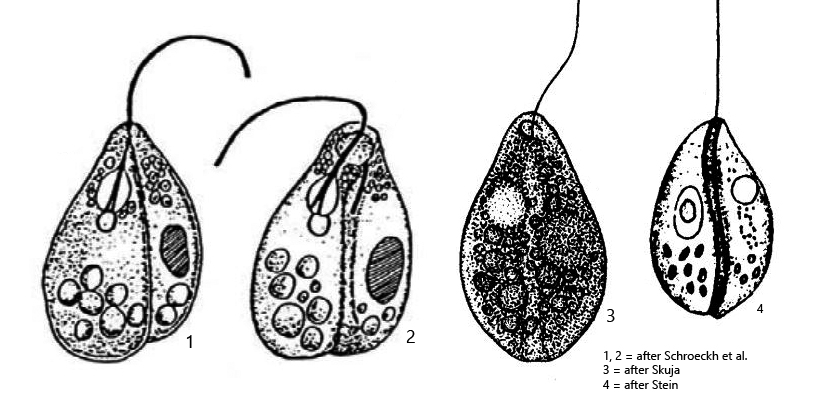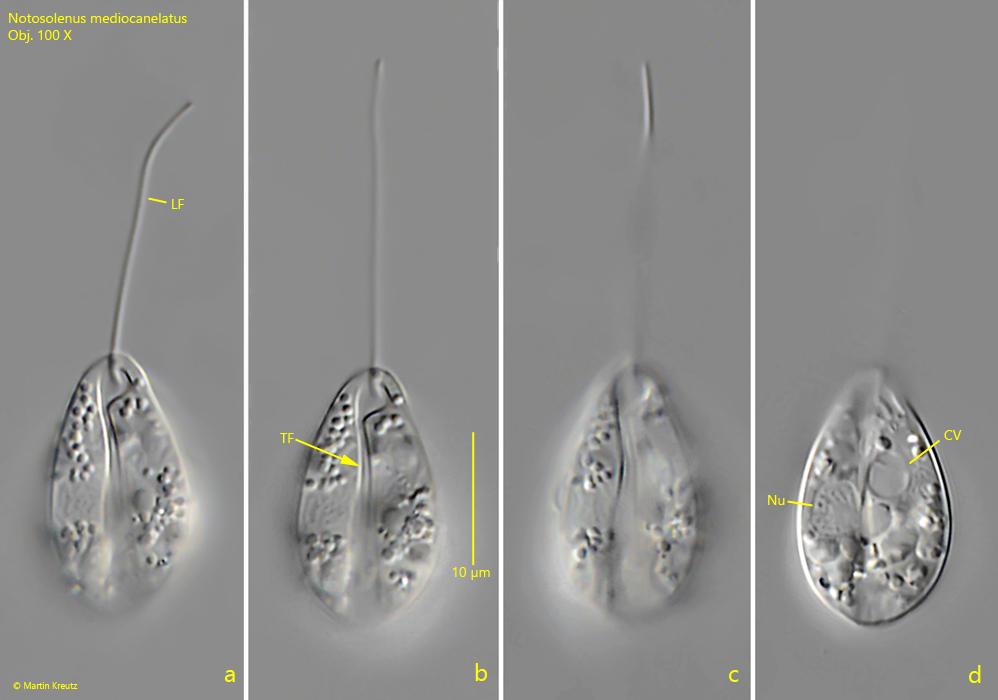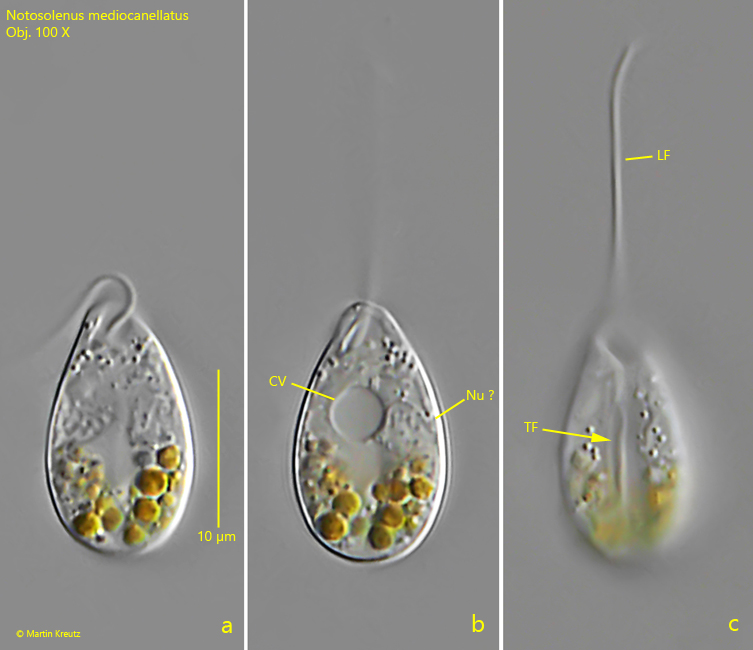Notosolenus mediocancellatus
(Stein) Schroeckh, Lee & Patterson, 2003
Most likely ID: n.a.
Synonym: Petalomonas mediocanellata
Sampling location: Simmelried
Phylogenetic tree: Notosolenus mediocanellatus
Diagnosis:
- body ovate, with ventral groove, dorso-ventrally flattened, rigid
- length 15–30 µm
- locomotion flagellum about body length
- trailing flagellum about one fourth of body length, in ventral groove
- contratile vacuole in anterior third, right side
- nucleus in anterior third, left side
- pellicle with very fine longitudinal striation (0.5 µm spaced)
- often food vacuoles in posterior third

I regularly find Notosolenus mediocanellatus in the uppermost mud layer in the Simmelried. I have not yet been able to find this species in my other sampling sites.
Notosolenus mediocanellatus was originally described as Petalomonas mediocanellata by Stein (1878). He overlooked the trailing flagellum in the ventral groove and therefore placed it in the genus Petalomonas. Later authors (e.g. Lemmermann, 1913) also overlooked the trailing flagellum. Only Schroeckh et al. (2002) were able to identify the trailing flagellum, which is difficult to recognize in the ventral groove. Accordingly, Schroeckh et al. placed the species into the genus Notosolenus and named it Notosolenus mediocanellatus.
I was also able to detect the trailing flagellum in my population (s. figs. 1 b and 2 c). According to my observations, it is also longer than a fourth of the body length, as described by Schroeckh et al. In fact, the trailing flagellum is very hard to recognize because the ventral groove, in which the trailing flagellum lies, narrows towards the anterior end. As a result, the flagellum is obscured by the overlapping edges of the groove. In my population, the specimens were between 15–22 µm long. I could not detect a dorsal groove, as described by Stein. Thus my observations agree with those of Schroeckh et al.

Fig. 1 a-d: Notosolenus mediocanellatus. L = 19 µm. Different focal planes of a freely gliding specimen from ventral. Note the trailing flagellum in the ventral groove (TF). CV = contractile vacuole, LF = locomotion flagellum, Nu = nucleus. Obj. 100 X.

Fig. 2 a-c: Notosolenus mediocanellatus. L = 17 µm. A second specimen from dorsal. CV = contractile vacuole, LF = locomotion flagellum, Nu ?= probably the nucleus, TF = trailing flagellum. Obj. 100 X.